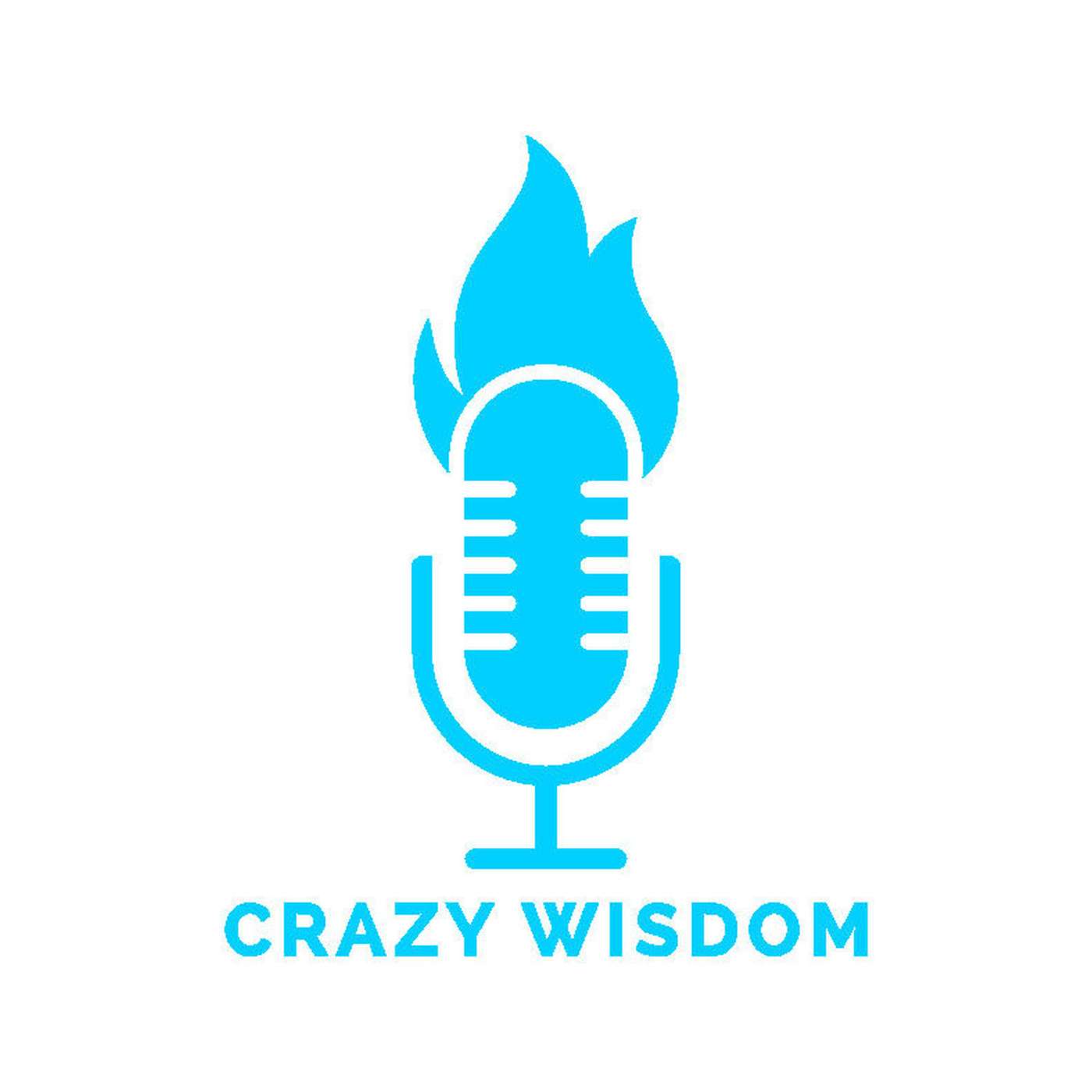

Crazy Wisdom
Stewart Alsop
In his series "Crazy Wisdom," Stewart Alsop explores cutting-edge topics, particularly in the realm of technology, such as Urbit and artificial intelligence. Alsop embarks on a quest for meaning, engaging with others to expand his own understanding of reality and that of his audience. The topics covered in "Crazy Wisdom" are diverse, ranging from emerging technologies to spirituality, philosophy, and general life experiences. Alsop's unique approach aims to make connections between seemingly unrelated subjects, tying together ideas in unconventional ways.
Episodes
Mentioned books

Mar 25, 2019 • 56min
How can Daoism make us less stressed and more creative?
Paul drops some knowledge on how to find yourself, live more creatively while being less stressed, and find your purpose here on the planet. Really deep. I hope you enjoy.

Mar 18, 2019 • 46min
The medical implications of stress
I just interviewed Lavinia Cerasela Ionita about her work using stress biomarkers and personalized video conferencing with doctors to help people get a handle on their stress.

Mar 11, 2019 • 35min
The risk of being creative
I sit down with my roommate David Zangwill who has a lot of interesting things to say about the relationship between stress and creativity.

Mar 4, 2019 • 36min
Jill Eickmann
I've been doing Improv for the last month to improve my ability to be more spontaneous on the podcast and I've started to fall deeply in love with doing improv. I interviewed Jill Eickmann the founder of the local improv studio I go to called Leela and I ask her about her upcoming improv festival called Femprovisor Fest.

Feb 25, 2019 • 41min
Are we moving into the 5th dimension?
I interviewed Maria in both English and Portuguese. This one is the English one and we go pretty deep metaphysically speaking. We even talk about moving into the 5th dimension and Maria's thoughts on the evolution of mankind and whether aliens are helping us.

Feb 18, 2019 • 44min
Tommy Leep of AngelList
I sit down with Tommy Leep who does BD at AngelList and also helps people find their life's work with his company Jetstream. We talk about how people can minimize stress while finding a new career and stress in the context of raising money from investors.

Feb 11, 2019 • 1h 1min
Peter Rex: Do rebels experience stress when they rebel?
Here is my interview with Peter Rex where I interview him about his fast growing company MakeRise, as well as his experience going against the status quo.

Feb 4, 2019 • 55min
How does a healthy relationship make you more creative?
It was very interesting interviewing someone about stress and creativity in the context of relationships. Its not something that I have thought a lot about, but lead to some wide-ranging insights. If you ask a genius where their ideas come from, none of them are able to actually tell you the answer. It comes from this place of emptiness. This is why meditation can help you become more creative. You already are creative because each thought you think is an example of fascinating creativity. You are creating your reality right now. Your brain is creating meaning out of all the information coming into your brain from your senses. Think about language and all the meanings we prescribe to it even if the other person speaking it meant a completely different thing! I asked her: How does having a stable and secure romantic partnership allow people to become more creative and to manage stress better? She gave a really powerful story about how her own relationship helped support her partner in creating an amazing statue for burning man after crowdfunding it. His car was stolen the night before filming for the crowdfunding campaign. Talk about stress!

Jan 28, 2019 • 47min
What are some sources of stress when working remotely?
Just did an interview with the CEO of Gitlab, Sid Sibrandij. Gitlab is a multibillion dollar company that helps developers become more efficient with less stress. One of the most interesting values they have is that they are totally transparent. They post lots of their meetings and code reviews to youtube so that everyone can see. I was able to ask Sid pretty much anything about the company and he would answer. This could be a source of stress because there is always this line between honesty and kindness. There is such a thing as being too honest and it can hurt people. A really interesting side effect of their strategy of transparency and publishing everything online is they get a whole lot of business because people just find them. That's how I found them too!

Jan 7, 2019 • 39min
What is the relationship between accountability and stress?
Taylor Jacobson is the CEO of Focusmate an amazing product that pairs you with a virtual coworking buddy. Both you and your coworker keep each other accountable for an hour while you pound through tasks. I reached out to Taylor because I'm a user of the product and wanted to hear his thoughts on the connection between stress and creativity.


